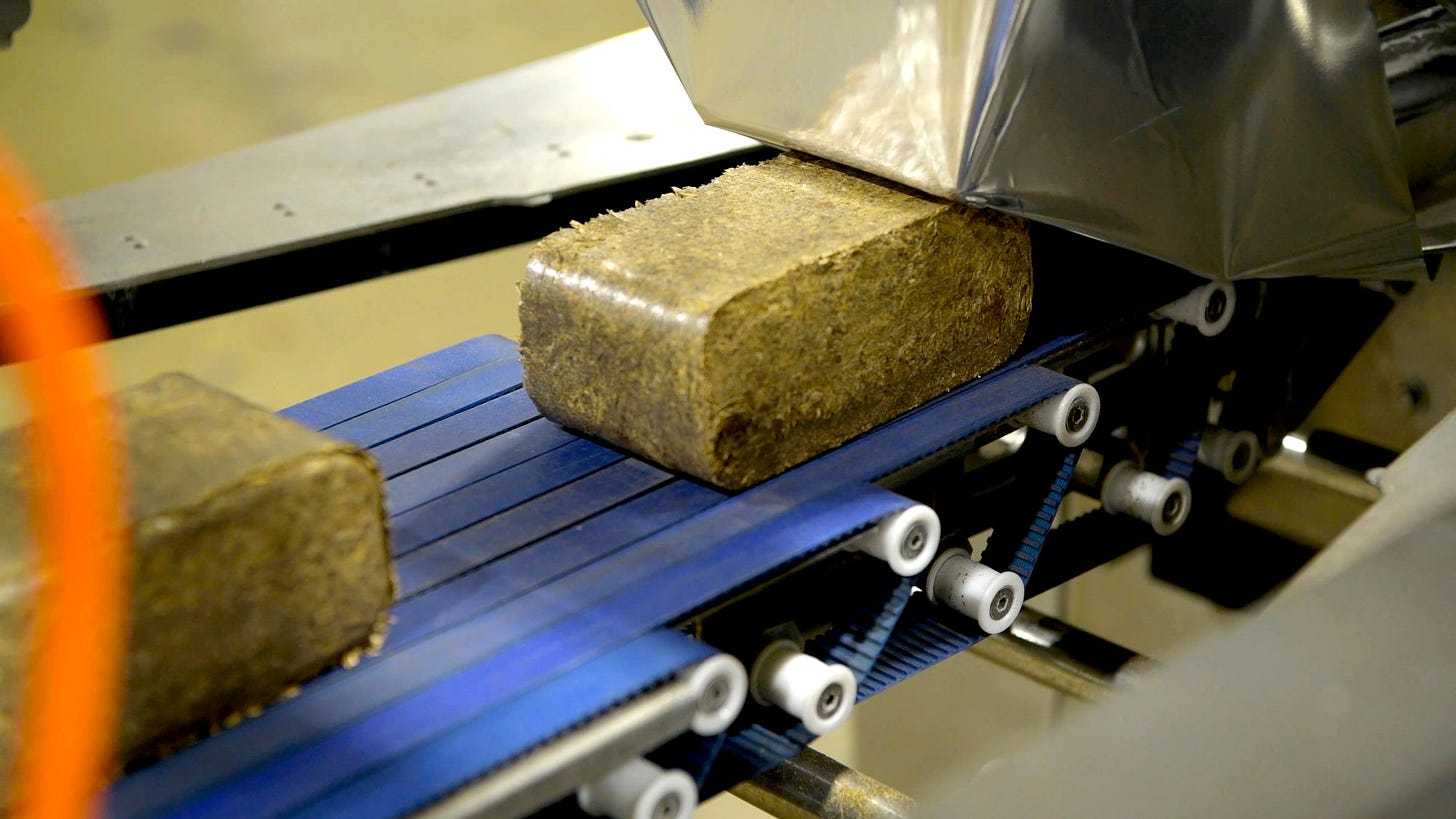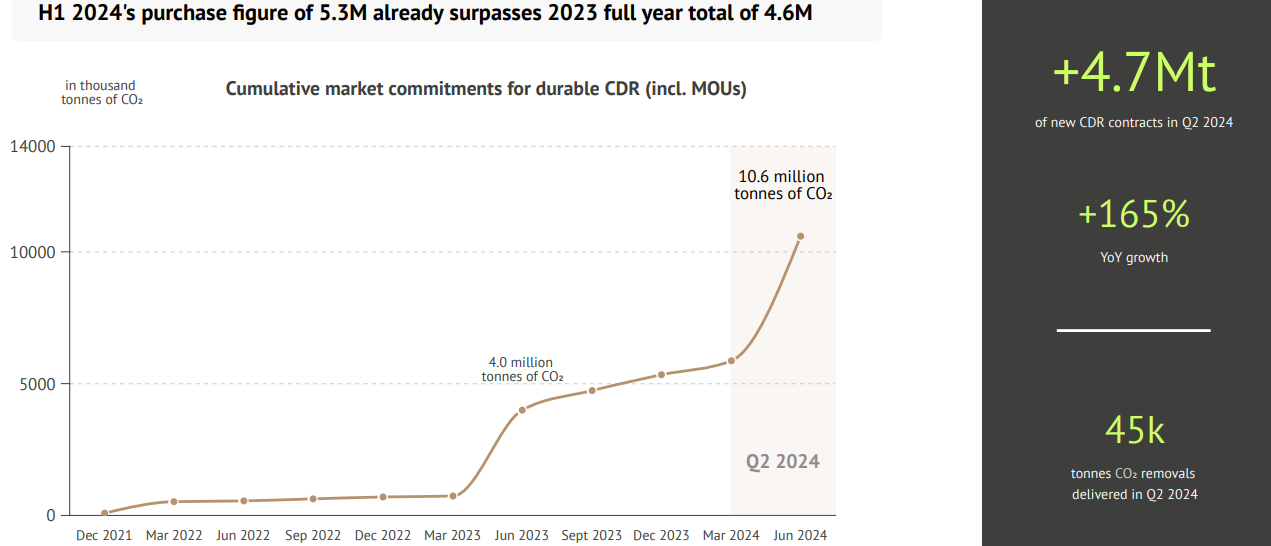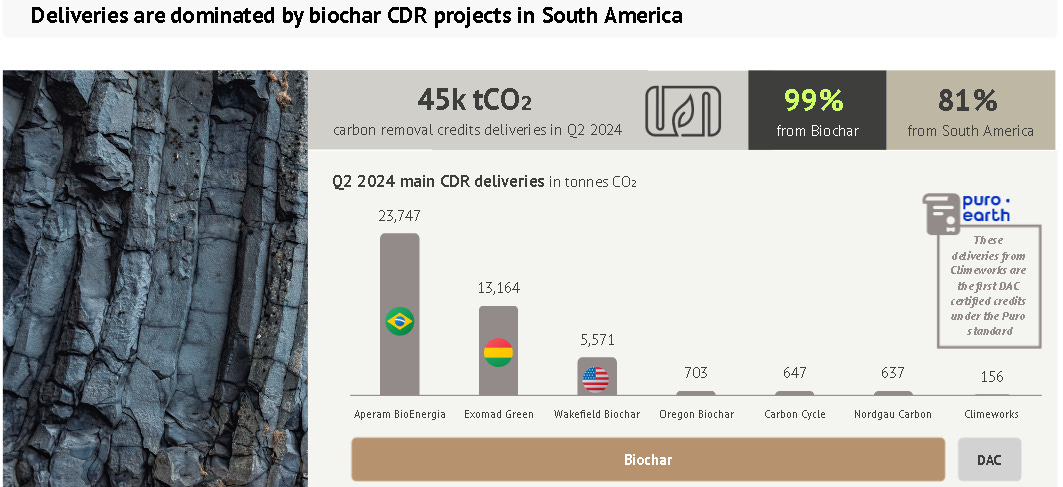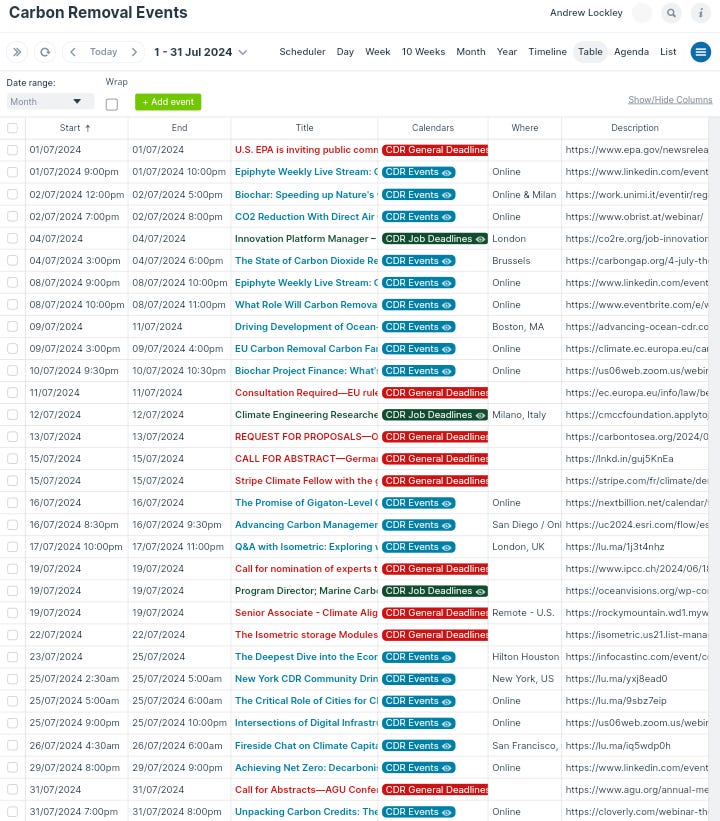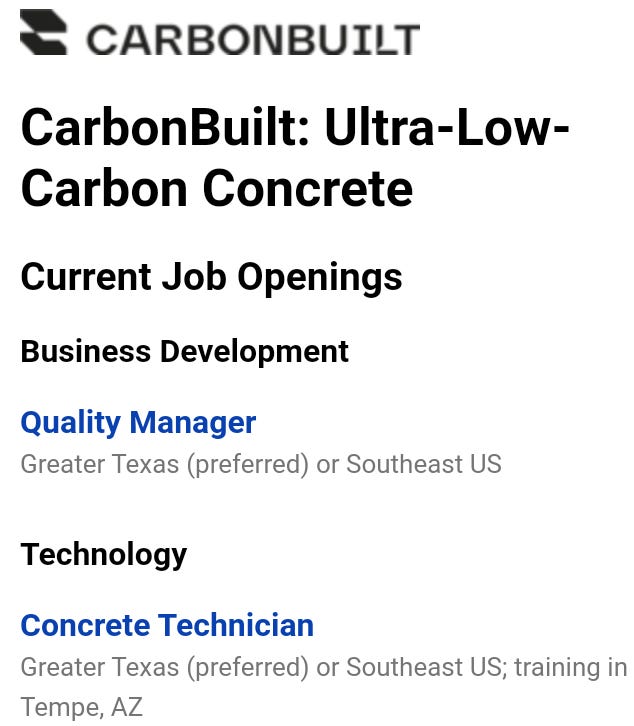CARBON REMOVAL WEEKLY SUMMARY (15 JULY - 21 JULY 2024)-WEEK#29
Links to recent scientific papers, web posts, upcoming events, job opportunities, podcasts, and event recordings, etc. on Carbon Dioxide Removal Technology.
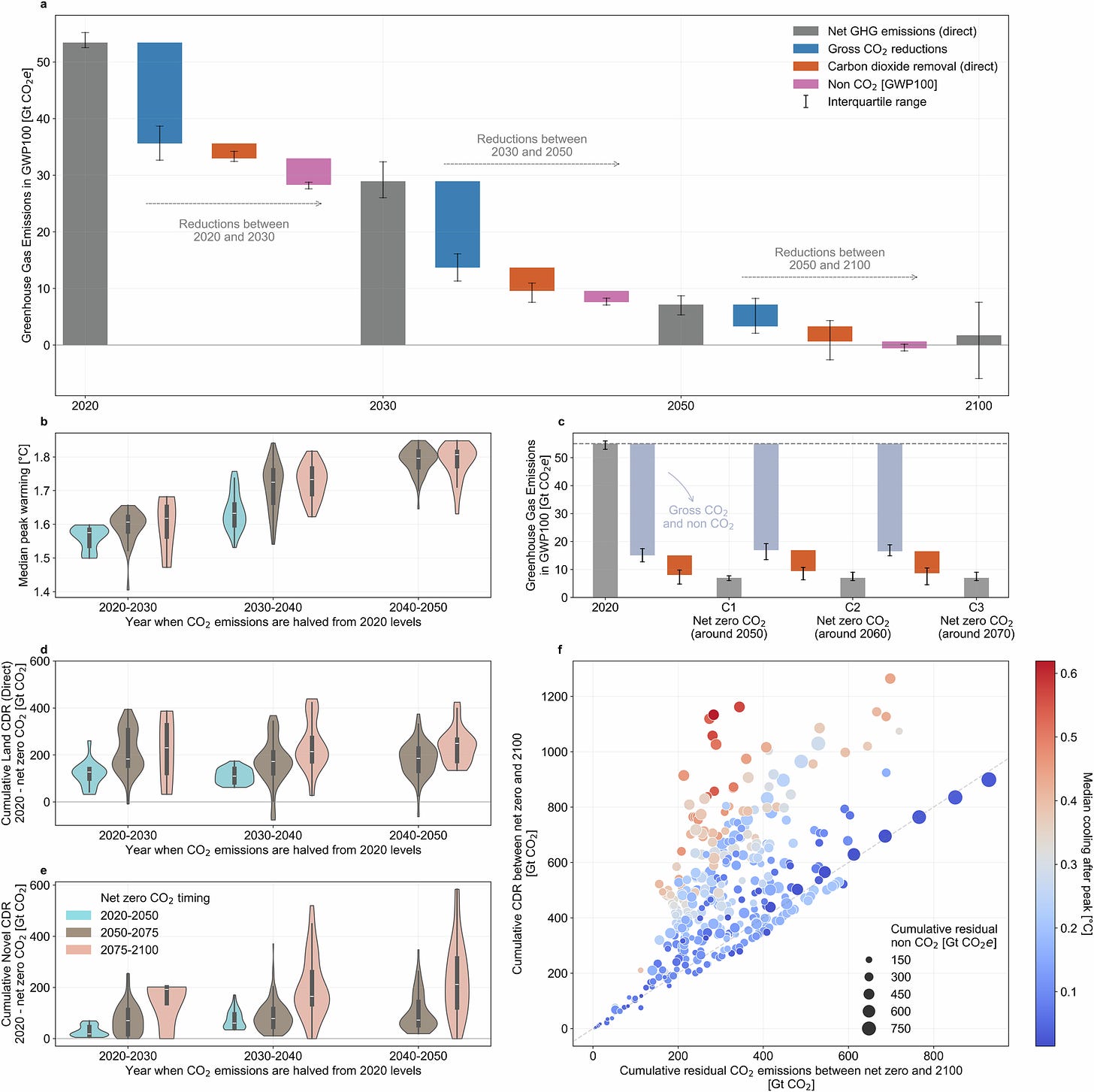
💸COMMERCIAL NEWS
44.01 completes $37m Series A investment round (44.01)
Climeworks deepens its collaboration with Zürcher Kantonalbank (Climeworks)
Bio-Logical Raises $1.3M to Scale Carbon Removal and Build the Climate Resilience of Kenyan Smallholder Farmers (PR Newswire)
BlueGreen Water Technologies Raises Millions in Series B Funding to Accelerate Water-Based CO2 Removal at Scale (EIN Presswire)
Earthshot Labs Raises $5.5 Million for Nature-Based Carbon Project Financing Platform (ESG Today)
Green Valley Biochar and Bton Group Partner to Promote Sustainable Concrete in the GCC (Biochar Today)
In 2024 alone, Skytree's systems have captured 1.5 tonne of CO2 from the ambient air (LinkedIn)
Phlair unveiled Electra 01, its new DAC plant in Rotterdam, scheduled to commence operations in 2025 in partnership with Paebble (LinkedIn)
Innovation Grants Awarded to Four Projects that Will Transform Waste to Reduce Wildfire Risk, Lock Away Climate Pollution (Boulder Country)
Holyoke zero-carbon cement maker lands 2,000-ton order from Vineyard Offshore wind developers (MassLive)
Carbon Neutral Initiative initiated their first ERW pilot scheme in Spain (LinkedIn)
Changeblock to acquire JustCarbon carbon removal marketplace (the armchair trader)
Air Liquide to supply Stockholm-based BECCS project with liquefaction tech (GasWorld)
remove announce the selection of 8 Carbon Dioxide Removal startups for Cohort 6 Leap of accelerator program (LinkedIn)
Direct Air Capture multi-unit configuration launched for greenhouse production (Horti Daily)
Startup dumps sand in Atlantic to catch carbon (E&E News)
Gentoo.earth partnered with AirMyne to unlock the supply of durable carbon removals by providing project developers with tools & insights to accelerate their commercialization strategy (LinkedIn)
SQUAKE has partnered with Planboo to support the growth of the Carbon Dioxide Removal industry in the global South (LinkedIn)
EcoNetix and Carbony Partnered to Expand Carbon Removal Forestry Projects (ARR) in Africa (LinkedIn)
📝RESEARCH PAPERS
The enduring world forest carbon sink
Pan, Y., Birdsey, R. A., Phillips, O. L., Houghton, R. A., Fang, J., Kauppi, P. E., ... & Murdiyarso, D. (2024). The enduring world forest carbon sink. Nature, 631(8021), 563-569.
Synopsis: The uptake of CO2 by terrestrial ecosystems is critical for moderating climate change. A synthesis of in situ forest data from boreal, temperate, and tropical biomes spanning three decades shows a steady global forest carbon sink at 3.6 ± 0.4 Pg C yr−1 in the 1990s and 2000s, and 3.5 ± 0.4 Pg C yr−1 in the 2010s. Despite global stability, biome-level changes include increased sinks in temperate (+30 ± 5%) and tropical regrowth (+29 ± 8%) forests, and decreased sinks in boreal (−36 ± 6%) and tropical intact (−31 ± 7%) forests. The global forest sink equals half of fossil-fuel emissions but is offset by tropical deforestation. Effective land management policies are essential to maintain this carbon sink.
The Carbon Removal Budget: theory and practice
Caldecott, B., & Johnstone, I. (2024). The Carbon Removal Budget: theory and practice. Carbon Management, 15(1), 2374515.
Synopsis: CDR is vital for achieving global net zero emissions but is limited and unevenly distributed. Introducing the Carbon Removal Budget (CRB), this study explored its application, estimate global CRB, review constraints, and outline pathways for equitable and effective CDR implementation to support net-zero transitions.
Separation and concentration of CO2 from air using a humidity-driven molten-carbonate membrane
Metcalfe, I. S., Mutch, G. A., Papaioannou, E. I., Tsochataridou, S., Neagu, D., Brett, D. J., ... & Hunt, P. A. (2024). Separation and concentration of CO2 from air using a humidity-driven molten-carbonate membrane. Nature Energy, 1-10.
Synopsis: Separation processes become challenging when the species to be separated is highly dilute. This study report a molten-carbonate membrane that 'pumps' CO2 from a 400 ppm input stream (air) to a higher concentration output using ambient energy from a humidity difference. This H2O concentration difference drives CO2 permeation 'uphill,' akin to biological active transport, and boosts CO2 flux by an order of magnitude, even as the CO2 input concentration drops from 50% to 400 ppm. Computational modeling reveals that H2O-mediated carrier formation within the molten salt facilitates rapid CO2 transport.
Distinguishing mature and immature trees allows estimating forest carbon uptake from stand structure
Fischer, S. M., Wang, X., & Huth, A. (2024). Distinguishing mature and immature trees allows estimating forest carbon uptake from stand structure. Biogeosciences, 21(14), 3305-3319.
Synopsis: Connecting forest productivity to local variations in forest structure is challenging. This study use the forest model FORMIND to study carbon losses and productivity in a 25 ha old-growth temperate forest in China. Classifying trees as "mature" or "immature" reveals that gross primary production (GPP) increases with total basal area, while net primary production (NPP) and net ecosystem exchange (NEE) depend on immature trees' basal area. Basal area entropy, a proxy for immature tree prevalence, correlated well with NPP and NEE, outperforming other structural metrics. Results were consistent across spatial scales, suggesting new hypotheses for field and theoretical studies.
Recent advances in recirculating aquaculture systems and role of microalgae to close system loop
Ende, S., Henjes, J., Spiller, M., Elshobary, M., Hanelt, D., & Abomohra, A. (2024). Recent advances in recirculating aquaculture systems and role of microalgae to close system loop. Bioresource Technology, 131107.
Synopsis: This review highlights advances in using recirculating aquaculture systems (RAS) effluents as nutrient sources for microalgae, converting solid waste via hydrothermal liquefaction (HTL), and utilizing HTL aqueous phase for microalgae cultivation. Microalgae provide oxygen and sequester CO2, enhancing RAS performance. The review proposes an integrated system for oxygenation, CO2 capture, efficient microalgae cultivation, and nutrient recovery, suggesting microalgae-based biorefineries as eco-friendly, economically viable solutions for improved RAS performance and effluent conversion.
Quantifying the carbon sequestration potential of different soil management practices aimed at increasing organic content in soil and reducing the usage of chemical inputs
Kaur, M., Nagabhooshanam, N., Sharma, P., Singh, S., & Krishna, R. V. V. (2024). Quantifying the carbon sequestration potential of different soil management practices aimed at increasing organic content in soil and reducing the usage of chemical inputs.
Synopsis: The study finds that soil management practices like cover cropping, crop rotations, conservation tillage, compost application, organic amendments, IPM, and precision agriculture enhance soil organic carbon (SOC) levels, reduce greenhouse gas emissions, improve soil health, and maintain or increase crop productivity. Quantifying carbon sequestration rates and evaluating environmental and agronomic benefits, the results support sustainable soil management strategies, inform agricultural policies, and guide farm decisions for climate resilience and food security.
Low latency carbon budget analysis reveals a large decline of the land carbon sink in 2023
Ke, P., Ciais, P., Sitch, S., Li, W., Bastos, A., Liu, Z., ... & Chevallier, F. (2024). Low latency carbon budget analysis reveals a large decline of the land carbon sink in 2023. arXiv preprint arXiv:2407.12447.
Synopsis: In 2023, the CO2 growth rate at Mauna Loa hit a record high of 3.37 ± 0.11 ppm, an 86% increase from the previous year, despite global fossil fuel CO2 emissions rising only by 0.6 ± 0.5%. This suggests a significant weakening of land and ocean CO2 sinks. This study reveals a global net land CO2 sink of 0.44 ± 0.21 GtC yr−1, the weakest since 2003, with major regional anomalies including a large carbon loss in the Amazon, extreme fire emissions in Canada, and a decline in land CO2 uptake north of 20°N. The tropics transitioned from carbon gain during La Niña years to loss during the 2023 El Niño. Extreme heat contributed to a gross carbon loss of 1.73 GtC yr−1, highlighting the severe impact of record warming on terrestrial ecosystems' ability to mitigate climate change.
Prospective environmental burdens and benefits of fast-swing direct air carbon capture and storage
Ottenbros, A. B., van Zelm, R., Simons, J., van der Hulst, M. K., de Kleijne, K., de Neve, H., & Huijbregts, M. A. (2024). Prospective environmental burdens and benefits of fast-swing direct air carbon capture and storage. Scientific Reports, 14(1), 16549.
Synopsis: This study assesses the environmental impact of a new fast-swing solid sorbent DAC system, including CO2 transport and storage, using life cycle assessment. Expected to be industrial-scale by 2030, the system was analyzed across various electricity generation configurations: grid-connected, wind-connected, and hybrid. The study found net environmental benefits for all configurations, particularly in ecosystem damage and climate change mitigation. Net human health benefits were noted with rapid grid decarbonization and without battery use. The system's environmental benefits increase as the electricity footprint decreases, making it a viable option for achieving climate goals.
Evaluating the near- and long-term role of carbon dioxide removal in meeting global climate objectives
Ganti, G., Gasser, T., Bui, M., Geden, O., Lamb, W. F., Minx, J. C., ... & Gidden, M. J. (2024). Evaluating the near-and long-term role of carbon dioxide removal in meeting global climate objectives. Communications Earth & Environment, 5(1), 377.
Synopsis: Using land-based CDR datasets, this research find that afforestation and reforestation are crucial for near-term mitigation, contributing about 10% of net greenhouse gas reductions from 2020 to 2030 in 1.5 °C scenarios. Novel technologies like direct air capture will scale to multi-gigatonne levels by 2050. Reducing fossil fuel and deforestation emissions accounts for over 80% of net reductions until global net zero CO2 is achieved. We analyze regional emission distributions and emphasize the need to incorporate fairness and sustainability in future CDR assessments.
Bicarbonate-Carbonate Selectivity through Nanofiltration for Direct Air Capture of Carbon Dioxide
Rinberg, A., & Aziz, M. J. (2024). Bicarbonate-Carbonate Selectivity through Nanofiltration for Direct Air Capture of Carbon Dioxide. ACS ES&T Engineering.
Synopsis: This study proposed an improved alkalinity concentration swing (ACS) method, called bicarbonate-enriched ACS (BE-ACS), which uses bicarbonate ions to enhance CO2 extraction from aqueous alkaline solutions. By employing pressure-driven nanofiltration (NF) membranes to selectively separate bicarbonate from carbonate ions, we improve the CO2 partial pressure and extraction efficiency. Experiments with commercial membranes reveal high bicarbonate selectivity, exceeding 30 times in some conditions. Theoretical BE-ACS cycle analysis shows a low energy requirement of about 250 kJ/mol, with potential for further reductions through process optimization and forward osmosis energy recovery.
Response of Marine Primary Producers to Olivine Additions
Rønning, J., Kofoed, Z. J., Jacobsen, M., & Löscher, C. R. (2024). Response of Marine Primary Producers to Olivine Additions. EGUsphere, 2024, 1-36.
Synopsis: This study examines the impact of olivine on primary producers such as Coccolithophores, Diatoms, and Synechococcus. Results show that olivine additions, despite increasing nickel concentrations, generally did not harm and sometimes slightly enhanced the growth of these organisms, with picoplankton benefiting the most. Phytoplankton responses varied by species and media. While the findings support the use of olivine for CO2 removal without detrimental effects on primary producers, further ecosystem-level studies are needed to assess impacts on different trophic levels and natural settings.
Carbon dioxide removal and net zero emissions in Africa: an integrated assessment modelling based on three different land-based negative emission solutions
Ampah, J. D., Afrane, S., Adun, H. H., Dioha, M., Agyekum, E. B., Yusuf, A. A. A., ... & Bamisile, O. (2024). Carbon dioxide removal and net zero emissions in Africa: An integrated assessment modelling based on three different land-based negative emission solutions. Environmental Research Letters.
Synopsis: This study models net-zero emissions (NZE) in Africa by 2050, focusing on afforestation/reforestation (AR), bioenergy with carbon capture and storage, and biochar. The total gross carbon removal could reach 1.2 GtCO2 yr−1 with all three approaches or 0.5 GtCO2 yr−1 with AR alone. AR or AR with biochar is costly but reduces fossil fuel emissions. An NZE scenario could cut cropland by 30%–40%, especially affecting Southern Africa, with AR alone leading to higher food prices compared to the AR-BECCS-biochar combination. The study underscores the need for tailored carbon removal strategies that balance climate goals with regional sustainability.
Review of the US 2050 long term strategy to reach net zero carbon emissions
Fam, A., & Fam, S. (2024). Review of the US 2050 long term strategy to reach net zero carbon emissions. Energy Reports, 12, 845-860.
Synopsis: In 2015, the US set national greenhouse gas reduction goals through a Nationally Determined Contribution, with a detailed long-term strategy introduced in 2021. This strategy outlines core elements: decarbonizing electricity, electrifying end uses, cutting energy waste, reducing non-CO2 emissions, and scaling up carbon removal. Funded by tax incentives and grants from the Inflation Reduction Act, it faces hurdles like political resistance, funding, permitting issues, and debates over incentives vs. taxation. Technical challenges include energy efficiency, hydrogen use, carbon treatment, nuclear and renewables expansion, biofuel integration, energy storage, and grid adequacy. This review highlights these challenges and explores potential solutions.
Soil carbon management and enhanced rock weathering: The separate fates of organic and inorganic carbon
Manning, D. A., de Azevedo, A. C., Zani, C. F., & Barneze, A. S. (2024). Soil carbon management and enhanced rock weathering: The separate fates of organic and inorganic carbon. European Journal of Soil Science, 75(4), e13534.
Synopsis: Soil carbon management, including enhanced rock weathering (ERW), is a promising strategy to mitigate atmospheric CO2. This Opinion highlights the need to distinguish between soil organic carbon (SOC) and soil inorganic carbon (SIC) for effective land management and carbon credit accounting. We advocate for separate management of SOC and SIC, ensuring that carbon credits for SOC and ERW can be claimed independently. While ERW shows potential for carbon removal, further research is needed to refine SIC measurement, monitor SOC turnover, and assess greenhouse gas implications.
The Effectiveness of Agricultural Carbon Dioxide Removal using the University of Victoria Earth System Climate Model
Evans, R. C., & Matthews, H. D. (2024). The Effectiveness of Agricultural Carbon Dioxide Removal using the University of Victoria Earth System Climate Model. EGUsphere, 2024, 1-24.
Synopsis: Using an intermediate complexity climate model, this study simulated agricultural CDR at various rates and costs under three future emissions scenarios. We found that agricultural CDR could reduce CO2 concentrations by 5–19 ppm and surface air temperatures by 0.02–0.10°C by century’s end. The temperature reduction response was non-linear and less effective compared to permanent geological storage due to the active carbon cycle. CDR was more effective in low emissions scenarios due to the logarithmic relationship between CO2 concentration and radiative effects. Higher CDR rates were more impactful, particularly in lower cumulative CO2 scenarios. The effectiveness of CDR also depended on the balance between CO2 fertilization effects and increased soil respiration.
Impact of carbon dioxide removal technologies on deep decarbonization: EMF37 MARKAL–NETL modeling results
Victor, N., & Nichols, C. (2024). Impact of Carbon Dioxide Removal Technologies on Deep Decarbonization: EMF 37 MARKAL–NETL Modeling Results. Energy and Climate Change, 100143.
Synopsis: This paper explores MARKAL-NETL modeling results from the Energy Modeling Forum's EMF 37 study on Deep Decarbonization and High Electrification Scenarios for North America, focusing on CDR technologies. It highlights that CDR, including BECCS, DAC, and afforestation, is crucial for deep decarbonization, contributing 40–60% of avoided CO2 emissions annually. From 2025 to 2050, CDR technologies could abate 37–47 billion tons of CO2, over 2 Gt annually by 2050. The scale and impact of CDR depend on technological advancements, energy costs, and sector electrification. BECCS, while potentially limited by environmental and political factors, could significantly reduce emissions post-2035, with deployment starting around $70/tCO2 and reaching 890 MtCO2 annually by 2050 in net-zero scenarios. DAC serves as a backstop technology, viable at around $600/tCO2.
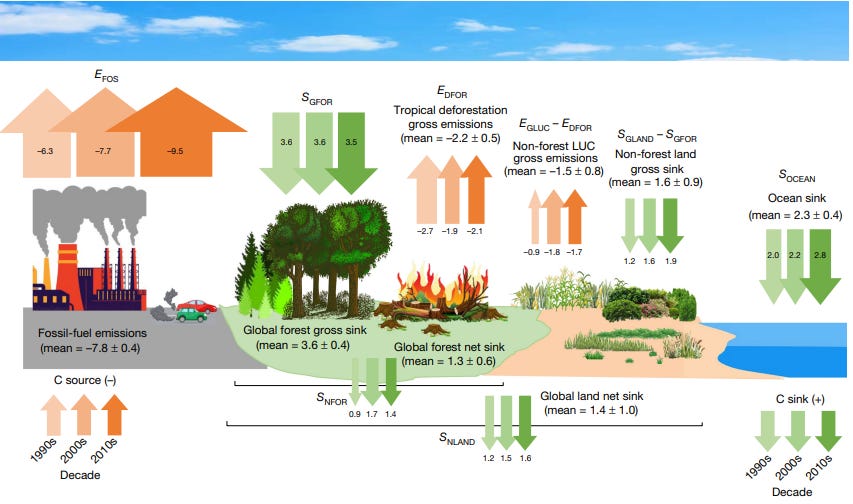
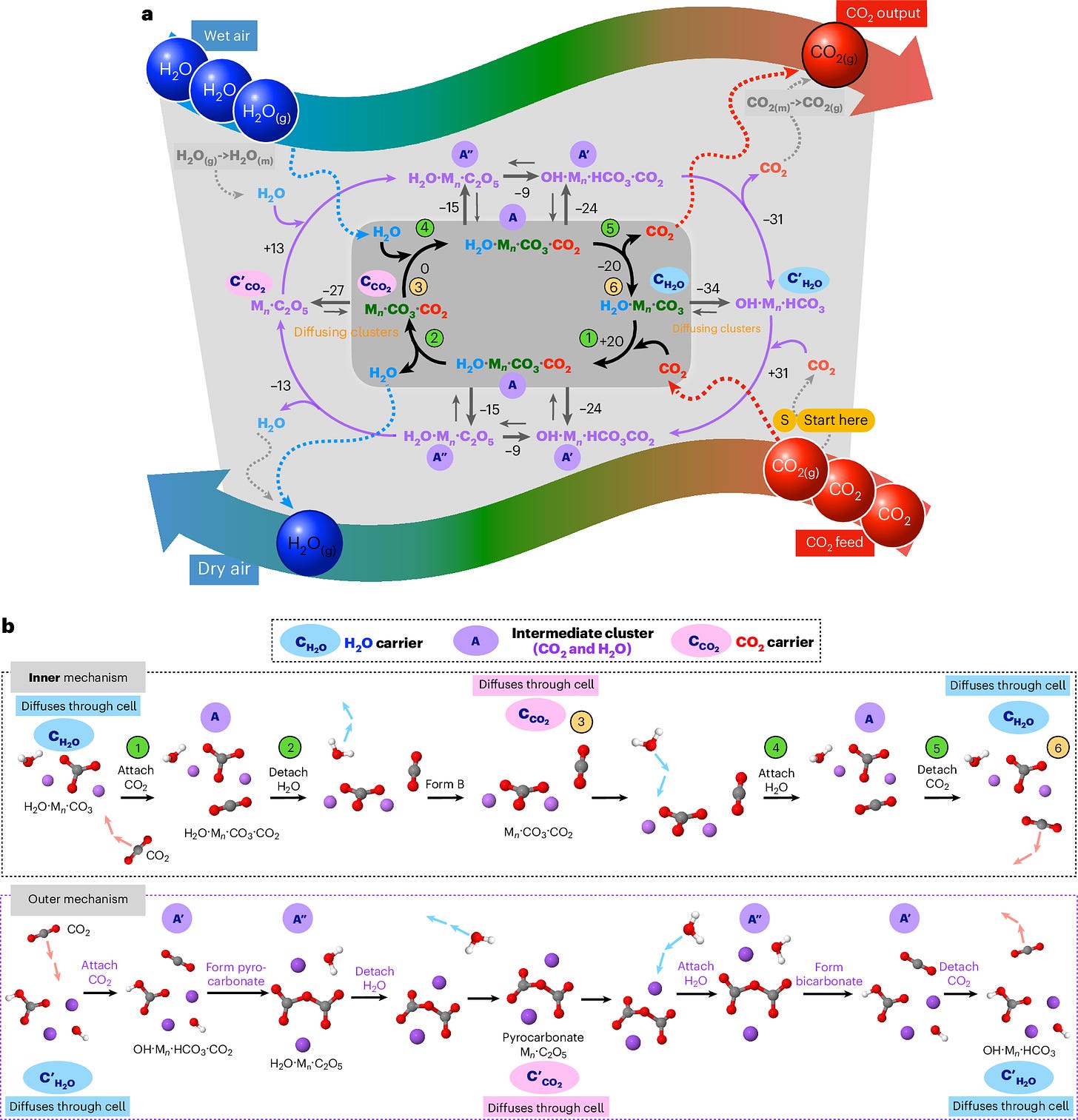
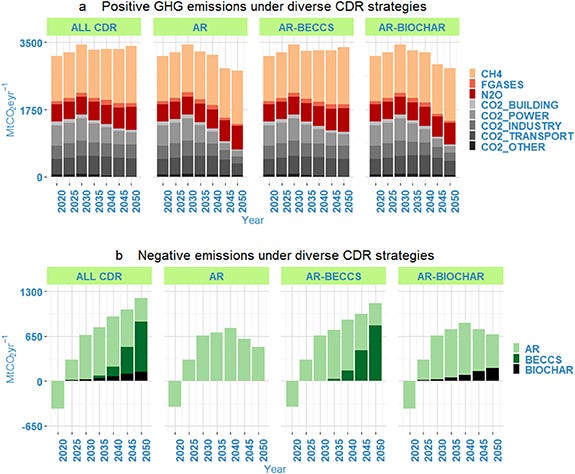
📰WEB POSTS
Concrete plans for a low-carbon future (BusinessDesk Opinion)
'Butter' made from CO2 could pave the way for food without farming (New Scientist)
Climate tech explained: direct air capture (Financial Times)
Will Burying Biomass Underground Curb Climate Change? (Undark)
What the UK election means for carbon removal (Isometric)
SAF Investment and Rail Reform: How Travel Reacted To The King's Speech (ttg)
Another forest offset project is burning — if you know where to look (carbon)plan
Our DAC unveiling event: Kicking off a new era in climate innovation (Carbon Capture)
Cutting-Edge Projects Aim to Decarbonize US Cement Emissions (World Resources Institute)
Deployment incentives for carbon dioxide removal in the EU and the USA (Carbon Gap)
The first offset credits approved by a major integrity program don’t make the grade (carbon)plan
Using the ocean as a carbon sink may be our best hope against climate change (Boston Globe)
CI, Bregal Sphere partner to scale nature-based removal projects (Quantum Commodity Intelligence)
How an Arctic rock inspired this Texas couple to develop a new way to capture carbon (Fast Company)
French Biochar Firm NetZero in Final Round for Elon Musk’s XPrize (Biochar Today)
Climate: 8 major risks to anticipate (Unric)
Brazil's Mato Grosso to hold public hearing on BECCS project (Quantum Commodity Institute)
Amazingly, forests are still sucking up as much carbon as they were 30 years ago. But there’s a catch (Grist)
Delivering Greenhouse Gas Removal in the UK: Priorities for the government (CO2RE)
New IEA Study Suggests CO2 Markets Could Drive Green Fuel Adoption (Carbon Herald)
📒THESIS
Energy demand and savings opportunities in the supply of limestone and olivine-rich rocks for geochemical carbon dioxide removal
Experimental assessment of enhanced benthic weathering of calcite and dunite in the south western Baltic Sea
Development of Core-shell Electrospun Fibers Containing Adsorbents for Direct Air Capture of CO2
📃REPORTS
Removals for growth (BeZero)
Enhanced Rock Weathering in Croplands (Carbon Direct)
CarbonX Quarterly Review Q2 2024: CDR Market Insights and Trends (CarbonX)
🗓️UPCOMING EVENTS
The Promise of Gigaton-Level Ocean CO2 Sequestration | 16 July 2024 | Online
Advancing Carbon Management: Insights from Land to Sea Using ArcGIS Tools | 16 July 2024 | San Diego / Online
Q&A with Isometric: Exploring women-led innovation in Carbon Dioxide Removal (CDR) by Isometric | 17 July 2024 | London, UK
(NEW) The Deepest Dive into the Economic and Regulatory Factors Driving the Success of the CCS/CCUS Project Development Landscape | 23-25 July 2024 | Houston
New York CDR Community Drinks by Isometric | 24 July 2024 | New York
Intersections of Digital Infrastructure and Carbon Removal by Carbon Business Council and Climate Collective | 25 July 2024 | Online
Intersections of Digital Infrastructure and Carbon Removal | 25 July 2024 | Online
(NEW) The Critical Role of Cities for CDR and the Dept. of Energy's new Voluntary CO2 Removal Purchasing Challenge by Pete Greider | 25 July 2024 | Online
(NEW) Fireside Chat on Climate Capitalism w/ Akshat Rathi and tour of Charm Industrial by Charm Tours | 25 July 2024 | California
(NEW) Achieving Net Zero: Decarbonisation Strategies and Energy Transition by illuminem | 29 July 2024 | Online
(NEW) Unpacking Carbon Credits: The Power of Biochar by Cloverly | 31 July 2024 | Online
(NEW) SB 308: Unpacking California's Latest Carbon Removal Bill by Institute for Responsible Carbon Removal | 07 August 2024 | Online
(NEW) Epiphyte Weekly Stream: Open Source Direct Air Capture by The OpenAir Collective | 08 August 2024 | Online
(NEW) Project Bantam - Opening Ceremony by Heimdal | 13 August 2024 | Oklahoma
2nd Biochar Malaysia Association International Conference 2024 by International Biochar Initiative | August 13-14, 2024
Goldschmidt 2024 conference, Chicago | 18-23 August 2024
CO2 Removal Spring School 2024 by University of Tasmania | 2-6 September 2024 | UTAS Hedberg facility, University of Tasmania, Hobart
Carbon Unbound Europe | 11-12 September 2024
(NEW) Responsible Carbon Removal Workshop: Centering Indigenous Leadership by Carbon Removal Canada | 12 September 2024 | British Columbia
Carbfix Mineralization Summit 2024 | 12-13 September 2024
Grounding Carbon Farming at Wageningen University & Research by WIMEK in collaboration with SBL, ENP, NGO myclimate, and the farm "La ferme de Hyaumet" | 14-20 September 2024 | France
Carbon Clean-up Camp | 19-22 September 2024 | UK
CO2NNECT 2024 by the Great Plains Institute's Carbon Action Alliance | 29 September - 01 October 2024 | Colorado
Bellona Climate Action Conference | 01 October 2024 | Brussels (Belgium)
Volcanoes and past climate: adventures with deep carbon | 12 October 2024 | Online & ExCeL London
IBI Biochar Study Tour: Italy by the Italian Biochar Association and the International Biochar Initiative | 16-18 October 2024 | Florence, Italy
5th EU Carbon Removals Expert Group meeting | 21-23 October 2024 | Online
The State of Durable Carbon Removal by Verge | 29 October 2024 | California, US
Carbon Removal Pathways We Don't Talk About Enough by Verge | 30 October 2024 | California, US
(NEW) From Wetlands to the Deep Ocean: Dive Into Marine-Based Carbon Removal by Verge | 30 October 2024 | California, US
Getting to Gigatonne: Barriers (and Pathways) to Scaling Carbon Removal In The Next 25 Years by Verge | 30 October 2024 | California, US
How to apply biochar in sustainability management and accounting | German Biochar Forum | 18 November 2024
(NEW) Scoping Workshop: Leaky deltas: sources or sinks in the global carbon cycle? by OCB | 17-20 March 2025 | Baton Rouge, LA
Bio-Char IV Conference | May 18-23, 2025 | Santa Marta, Colombia
We have curated a “Carbon Removal Events Calendar.” Explore and stay informed about upcoming events, conferences, and webinars on Carbon Dioxide Removal technology. Sync specific events / all events to your default calendar to ensure you never miss out on important CDR updates.
GUIDELINES:
Sync selected events to your default calendar in these simple steps:
1) Click on the event you want to sync.
2) Tap the menu icon (three vertical lines) at the top left.
3) Choose 'Share.'
4) Pick your default calendar.
5) Save the event.
Sync the entire Teamup Calendar to your default calendar with these simple steps:
1) Tap the menu icon (three vertical lines) at the top right.
2) Choose 'Preferences.'
3) Click 'iCalendar Feeds.'
4) Copy the URL shown for 'CDR Events / CDR General Guidelines / CDR Job Deadlines.'’
5) Paste the URL into your default calendar settings.
6) Click 'Subscribe' or 'Add Calendar.'
For more detailed instructions, visit: https://calendar.teamup.com/kb/subscribe-to-teamup-icalendar-feeds/
You can directly sync all Carbon Removal events to your default calendars by pressing the link below:
💼JOB OPPORTUNITIES
Project Commissioning Engineer by Graphyte | Pine Bluff, Arkansas
"Carbon Casting is a new approach to carbon removal that leverages readily available biomass, such as residues from timber and farming operations. We dry and compress it into dense carbon blocks protected by an environmentally-safe, impermeable barrier, and then store these blocks in underground sites with state-of-the-art monitoring. Carbon Casting preserves nearly all the carbon captured in the biomass and consumes very little energy in the process.
Combining photosynthesis with practical engineering, Graphyte’s Carbon Casting technology provides an immediate pathway for billions of tons of low-cost, permanent carbon removal."
Chief Dragon Tamer (aka Pilot Operation Manager) at Takachar | Petaluma, California, United States
"Most crop and forest residues (biomass) are loose, wet, and bulky, making them very expensive to collect and transport. As such, many rural communities are often shut out from the bioeconomy, and their only recourse is to burn the local residues in open air. This creates significant air pollution as well as risks for catastrophic wildfires. Takachar develops small-scale, low-cost, and portable systems that can latch onto the back of tractors and pick-up trucks, and deploy to rural, hard-to-access communities to locally upgrade and densify residues on-site into higher-value, carbon-negative bioproducts such as fertilizer blends, biofuels, and chemicals. The process requires no external energy or heat to run. Our goal is to create a network of self-sufficient rural communities less dependent on unreliable imported supply chains for their essential chemical commodities. By doing so, we create localized unskilled jobs and promote environmental justice."
Post-Doctoral Research Associate in Social Science of Net Zero aviation, and non-stipendiary Junior Research Fellow of Linacre College, Environmental Change Institute, School of Geography and the Environment (SoGE), University of Oxford | Deadline to apply: 22 August 2024
"An opportunity within the Environmental Change Institute as part of Oxford Net Zero: world-leading research enabling effective climate action to halt global warming.
The project is led by director Professor Myles Allen. It is supported by £1.625 million of funding (see below). The project consists of three work packages, examining definitions and financial analysis of GBFs, analysis of policy and business models, Monitoring, Reporting and Verification (MRV), and social, equity and justice aspects (this project)."
Engineered Carbon Researcher at MSCI Carbon Market | London
"The Integrity team within MSCI Carbon Markets conducts in-depth independent assessments of the integrity of carbon projects to provide more transparency on the quality of carbon credits and help buyers and investors to overcome their key challenges in buying carbon credits. Through developing methodological frameworks for assessing project integrity and then reviewing and evaluating projects against that framework, the Integrity team aims to push the carbon markets to solve the key integrity challenges that it still faces."
Project Manager at Capture6 | New Zealand
"Capture6 offers a game-changing technology that removes CO₂ from the atmosphere while producing additional freshwater for local communities. Our projects lie at the nexus between carbon removal and water security addressing both symptoms and source of climate change."
Senior Portfolio Innovation Manager at Elemental Excelerator | San Francisco, Washington D.C.
"Elemental Excelerator is a nonprofit investor dedicated to scaling climate solutions for deep community impact. With a 14-year track record, we invest in companies pioneering essential solutions to pressing climate challenges, making neighborhoods and homes cleaner, healthier, and safer. We've invested in over 160 climate companies to date and successfully stewarded $180 million in government and philanthropic resources, leveraging our expertise to de-risk technologies and attract additional investment. Core to our work supporting innovation and entrepreneurs, and essential to our five-year strategy, is the central role of social equity and community impact in the implementation of climate technologies."
Various Open Positions at CarbonBuilt:
"CarbonBuilt’s flexible, customizable ultra-low carbon concrete technology is easy to retrofit into existing masonry plants, using off-the-shelf equipment and locally sourced materials and CO2."
Sourcing and Partnership Development Manager at Climeworks | San Francisco
"Climeworks removes CO₂ from the air to fight global warming and protect future generations to come. We develop, build and operate direct air capture (DAC) machines which capture CO₂ directly from the air. The captured carbon dioxide is removed from the air by safely storing it underground, permanently. Founded in 2009 by engineers, Christoph Gebald and Jan Wurzbacher, Climeworks was built with a mission to inspire 1 billion people to remove CO₂ from the air, and is now spearheading the DAC industry globally. It has the world’s largest DAC facility and storage installation in operation and a team of over 450 Climeworkers determined to contribute to a net-zero future."
Petrochemical Scientist (BH0063) at Charm Industrial | San Francisco, California, United States
"Charm Industrial mission is to return the atmosphere to 280 ppm CO₂. We convert excess inedible biomass into carbon-rich bio-oil and inject it into underground storage for permanent carbon removal. At scale we can use bio-oil to make fossil-free iron."
Carbon Projects Manager at Mamaland | Porto, Portugal
"This role is pivotal for enhancing our carbon consultancy services, with a keen focus on the feasibility studies and accounting aspects of carbon projects. The ideal candidate will lead our efforts in evaluating the viability of carbon reduction and sequestration initiatives, ensuring accurate carbon accounting practices, and contributing significantly towards our commitment to global carbon neutrality objectives. This position demands expertise in carbon market mechanisms, regulatory compliance, and sustainability strategies to drive impactful carbon management solutions."
Postdoctoral Scholar: Earth System Modeling for Marine Carbon Dioxide Removal at The University of Washington
"The successful candidate will conduct research at the intersection between global biogeochemistry, computational oceanography, and marine carbon dioxide removal. They will lead the development of a global MOM6-COBALT earth system model implementation to investigate the impact of biotic calcification feedbacks on marine carbon dioxide removal (mCDR) effectiveness over century-scale timescales. This 2-year, 100% FTE position will be funded through a grant from the NOAA Ocean Acidification Program on behalf of the National Oceanographic Partnership Program (NOPP), and will be part of a collaborative project between the University of Washington, the National Center for Atmospheric Research, and industry partners. Dr. Darren Pilcher and Dr. Kelly Kearney will be the primary advisors with Dr. Brendan Carter acting as the University of Washington affiliate faculty sponsor. The applicant will join an interdisciplinary team of researchers investigating questions associated with marine carbon dioxide removal impacts across temporal and spatial scales. We are looking for applicants with proficiency in modeling and ocean physical and biogeochemical dynamics."
Postdoctoral Researcher Position in Enhanced Rock Weathering and Downstream Carbon Cycling at Texas A&M University
“The CArbon Cycle and Earth Environment (CACEE) Lab in the Department of Oceanography at Texas A&M University is seeking a Postdoctoral Researcher to work on modeling river networks and biogeochemical processes following enhanced rock weathering.
The postdoc will collaborate with Dr. Shuang Zhang as part of the "Global Ocean and Land Alkalinization (GOAL-A)" project, a new Department of Energy (DOE) Earth Shot collaborative initiative involving scientists from Yale, Georgia Tech, Princeton, and Texas A&M. At Texas A&M University, the Postdoctoral Researcher will conduct in-depth investigations into how rivers and lakes respond to enhanced rock weathering. The scope of the research will encompass shifts in river geochemical and ecological dynamics, alterations in carbon cycling within the interconnected river-lake-atmosphere-sediment system, and the modulation of elemental fluxes to the ocean.”
🎙️PODCASTS
Carbon Limit's Tim Sperry Pours the CaptureCrete Story | Earth911 Podcast
"Tim Sperry is the Founder and CEO of Boca Raton, Florida-based Carbon Limit, the maker of CaptureCrete. He founded the company in 2020 after recognizing concrete’s huge environmental price — it accounts for about 6% of annual global emissions. CaptureCrete is a powder additive for concrete mixes that extracts up to 220 pounds of carbon dioxide from the air per ton, locking it into the concrete as a stable mineral. CaptureCrete’s impact, after accounting for the CO2 it absorbs, is only about 25% of traditional concrete. But this wasn’t Tim's first shot at carbon capture for the built environment. Previously, he developed a paint additive that absorbed CO2 and other pollutants. Carbon Limit was named GreenBiz’s Startup of the Year at Verge 2023.
Building and operating homes, skyscrapers, factories, and freeways and generates about 10 gigaton of CO2, or about 40% of the emissions associated with energy use on the planet. The ability to tie carbon credits to building and infrastructure projects is key. When you can sell a carbon removal credit for around $200 a ton, the cost of a building can change rapidly. For example, if you’re building a skyscraper that’s 40 stories tall, you might need 4,000 or so cubic meters or concrete, which represents about 5700 tons of the material. With carbon credits that cost $200 per ton, that concrete represents a potential subsidy for the project of $1.1 million dollars. If we’re talking about a mile of freeway, which requires about 17,200 tons of concrete, the credits generated by CaptureCrete’s absorption of CO2 might be worth $3.4 million per mile of roadway. That’s real money, real savings that can make projects reach break-even sooner during the life of the building."
Episode 3 - Greg Nemet | The CDR Procurement Guide
"Highlights from this episode:
-The importance of objective evidence based information about carbon removal, what it is and what it isn’t and the diverse and increasing range of solutions
-The need for society to engage with a broad portfolio of solutions at this stage of development to give the greatest chance of success.
-Why climate science so challenging to communicate and what will help build a strong social license for CDR
-The goal of The State of CDR report and data portal to put the information needed in the hands of those that need it to facilitate the rapid development of CDR
-The 4 gigaton CDR gap and how to fill it
-How new technologies develop and move through the formative proving stage through deployment and adoption
-The need to get to a global standard equivalent to what we have for financial accounting (GAAP), converging from the 102 standards and protocols today
-The important features of effective government policy
-The value of learning by doing to gain experience and start to establish market practices
-The challenge: lessons from the industrial scale up of ammonia synthesis
-The need to scale up capacity now across the range of CDR solutions in order to meet 2050 goals. The role of absorptive capacity."
Every tool in the climate shed: How CO2 removal is a step towards net-zero | Green Pulse
"To fight climate change, we not only need to slash CO2 emissions, we would also need to remove billions of tonnes that our human activities had earlier emitted into the atmosphere.
And that means dramatically scaling up carbon dioxide removal technologies. We’ll never reach the Paris Agreement’s climate targets by 2050 unless we remove at least four times more CO2 from the atmosphere every year than we do at present.
That’s the conclusion of a major study on carbon dioxide removal released in June 2024.
So what exactly is carbon dioxide removal, or CDR? And what is needed to really get investment pumping?
In this episode, ST's climate change editor David Fogarty hosts one of the lead authors of the report, Gregory Nemet, a Professor at the University of Wisconsin–Madison’s La Follette School of Public Affairs in the United States. Greg studies the process of technological change and the ways in which public policy can affect it."
AgTechWatchers: He's a funghi | AgWatchers
"We have a chat with Guy Webb, the founder of Loam Bio. In this podcast, we learn about adding fungal spores along with your seed to increase carbon in soils. This was an interesting chat with a lot of puns.
This is a novel technology that hopes to add carbon but also increase yields. A must-have listen if you are growing crops."
🎥YOUTUBE VIDEOS
Episode 617 Ocean Fertility | ToSaveTheWorld
“Robert Tulip is a leading member of the climate change webinars Healthy Planet Action Coalition. Robert McNamee is founder of Lucent Bio, an organization that produces a soil amendment from rice husks. He had been actively engaged in the experiment led by the Haida tribe on British Columbia to increase the population of salmon with iron fertilization of the ocean. For the video, audio podcast, transcript and comments:”
Meet the Stripe Exec Who Leads a $1 Billion Carbon Removal Fund | GreenBiz
“Digital payments company Stripe started funding early-stage carbon removal technology companies in 2020. Two years later, the women behind that strategy masterminded the launch of Frontier, a $1 billion carbon removal buyers group co-founded with Alphabet, McKinsey, Meta and Shopify. As of April 2024, the group has signed contracts worth about $230 million.”
Conference talk: Testing several MRV approaches in a large-scale ERW greenhouse experiment | Dirk Paessler
“A conference presentation by Jens Hammes of Carbon Drawdown Initiative (www.carbon-drawdown.de) at the 3rd International Conference on Negative CO2 Emissions, 2024 in Oxford. Abstract: Enhanced weathering (EW) boosts the natural process of chemical rock weathering and is a promising strategy for substantial carbon dioxide removal (CDR). Large-scale deployment of EW is, however, hindered by the challenge of directly measuring the net achieved CDR. Monitoring, reporting and verification (MRV) of CDR achieved through EW will likely hinge on site-specific model calculations. Development of such models in turn requires numerous real life EW data sets from various environments to train and calibrate them. Indoor mesocosm experiments are closed systems that represent realistic EW environments. Compared to open field settings, they allow more straightforward data collection as well as speeding up the EW process by optimising climatic conditions. In our large-scale greenhouse study, we created ca. 100 mesocosm experiments (each replicated 4 times) with Lolium perenne kept at temperatures consistently exceeding 20°C and irrigation rates equivalent to 2000 mm/a. A range of different treatments resulted from the combination of 16 soils (pH 4.5 to 7.5; clayey loam to sand; CEC 3-18 meq/100g; SOC 0.5-7%) with (ultra)mafic rocks and alkaline industrial wastes (11 different feedstock materials in total). Our goal is to test various potential MRV approaches on short timescales and assess the CDR effects from different combinations of soils and EW materials. We carry out continuous CO2 monitoring and regularly sample soil, leachate water and biomass for a series of chemical analyses (pH, EC, alkalinity, cations, anions, heavy metals, …). Over 18 months, we expect to see distinct signals in our measurements between different treatments which can be used to derive a CDR effect calculation. Our preliminary results already revealed a much greater variation in CDR effect than expected from addition of the same rock dust to different soils.”
How Climate Leaders Incorporate Carbon Removals Into Their Overall Sustainability Plan | CUR8-Carbon Removals
“In this webinar, well see how some of the world's leading carbon removal operators have created their organisations net zero strategy to incorporate carbon removals”
Biochar Project Finance: What's available today and where do we want to go? | International Biochar Initiative (IBI)
“IBI and Kita partnered up for a panel and interactive discussion to dive into what’s available now regarding biochar project finance and where the industry is heading. Each panelist provided a unique perspective of how they’re currently engaging with biochar project finance and where they’d like to see advancement.”
Highlights of the Negative Emissions Summit 2024 (with subtitles) | Negative Emissions Platform
“On 20 June, we welcomed around 100 participants in Brussels at the Microsoft HQ for the Negative Emissions Summit. We explored the different carbon dioxide removal methods represented in the Negative Emissions Platform membership, the scientific advancements driving their evolution, the regulatory advancements and challenges of the sector and we put a spotlight on CDR buyers and the different access models to the CDR market.”
Conference Talk: Enhanced weathering with ultramafic rock: Field experiments with alfalfa in Greece. | Dirk Paessler
“Rock weathering involves the dissolution of minerals, a chemical process that creates cations and captures atmospheric CO2 by converting it into bicarbonate (HCO3-). Enhanced weathering (EW) aims to accelerate this by finely crushing appropriate rocks and optimizing their weathering conditions. Soils, particularly in agricultural areas with warm climates and ample water, contain up to 1000 times more CO2 than air, making them prime candidates for EW. Greece's geology includes several rock types suitable for EW, with at least two active olivine-rich ultramafic rock quarries. The plain of Thessaly, one of Greece's major agricultural regions, features arable land primarily used for cultivating annual crops and is heavily irrigated. This study presents initial results of an EW field experiment with alfalfa cultivation in central Greece. Methods In June 2022, a plot (2m x 2m) experiment with irrigated alfalfa was established in a soil representative of the Thessaly agricultural area (clay loam; pH 7.7; 2.7% CaCO3). An ultramafic rock dust (below 125 µm; 72% olivine; 44 wt% MgO) was applied at high rates to maximize the chances of observing an EW signal. The field was divided into 5 blocks with 3 treatments randomly assigned within each block: a control without rock dust, and applications of 50 ton/ha and 100 ton/ha. The rock dust was incorporated into the soil to a depth of about 20 cm. Five macrorhizons were installed in each plot for soil pore water sampling using a vacuum. Yield estimation was conducted on the central 1m x 1m of each plot 2-4 times/year. Plants and soils were collected each spring and autumn, and soil water was sampled every 2-6 weeks, depending on the season. Samples were analyzed at an accredited laboratory for parameters relevant to plant nutrition and soil quality, including those influenced by rock dust dissolution (cations, HCO3-, pH, Ni, Cr, etc.).
Results: The alfalfa yield was not negatively affected by rock dust application. No statistically significant difference was observed between the control and the two treatments, except for one harvest where the 100 ton/ha treatment yielded significantly more. Alfalfa plant nutrition showed a similar trend, with basic nutrients (N, P, K, Ca, Mg, etc.) showing no significant differences between treatments. However, Ni content consistently increased with more rock dust applied. Cr content in plants initially increased at higher applications but later showed a negative correlation with rock dust. Soil samples analyzed for 19 parameters showed significant differences in some parameters after one year. Four parameters linked to EW were affected: soil pH, CaCO3, and Ni increased in the rock dust treatments compared to the control, while Cr decreased. Soil water parameters occasionally showed significant differences between treatments, with the control having the lowest pH and increasing pH values with more rock dust. HCO3- content was generally lower in the control. Ni and Cr showed significant differences between treatments after the first year, with Cr levels rising in late 2023 as rock dust increased.
Conclusions: This experiment demonstrated EW signals in plants, soil, and soil water up to two years post-application in a clay-rich alkaline soil. Changes in the inorganic carbon system were evident through increased soil pH and CaCO3, and elevated pH and HCO3- in soil pore water. High amounts of ultramafic rock dust led to increased Ni in plants and soil and a delayed Cr increase in soil water more than one year post-application. While EW typically involves lower rock dust amounts, this study highlights the need for appropriate monitoring periods for Ni and Cr to avoid accidental heavy metal contamination. Alfalfa yields were not negatively affected by high rock dust doses, suggesting alfalfa as a potential crop for CDR through EW. Further research is needed to identify more sensitive parameters for detecting EW at lower rock dust application rates and to accurately quantify the CO2 removed in each EW project.”
Leo Series Unveiling Event Part 1 - Speaker program | CarbonCapture Inc.
“Watch the event where we debuted the first in our Leo Series of direct air capture (DAC) modules to an audience of 150 industry experts, partners, customers, and CDR stakeholders.”
Leo Series Unveiling Event Part 2 - Live demonstration of our DAC technology | CarbonCapture Inc.
“At our recent unveiling event Saeb Besarati, our Chief Technology Officer, and Brian Holman, our Manager of Systems Engineering, took the audience through the most transparent and comprehensive live demonstration performed in the DAC industry to date.”
Weekly Carbon Removal Updates from 15 July to 21 July 2024 | Carbon Removal Updates
🚨DEADLINES
Call for Abstract—German Biochar Forum 2024: How to apply biochar in sustainability management and accounting | Deadline to apply: 15 July 2024
Stripe Climate Fellow with the goal of seeding ideas to grow demand for Carbon Removal | Deadline: 15 July 2024
Call for nomination of experts to Scoping Meeting for Methodology Report on Carbon Dioxide Removal Technologies and Carbon Capture Utilization and Storage | Deadline: 19 July 2024
Call for Abstracts—AGU Conference | Submissions are open until 31 July 2024
CDR Sessions at AGU2024:
GC089 - Large-Scale Carbon Dioxide Removal: Potentials, Considerations, and Challenges
GC054 - Connecting Science and Monitoring, Reporting and Verification (MRV) Development for Cross-Pathway Carbon Dioxide Removal (CDR) Technologies
B088 - Science-Based Carbon Dioxide Removal (CDR) Strategies that Incorporate Monitoring, Measurements, Reporting, and Verification (MMRV)
OS027 - Modeling Approaches in Support of Ocean-based Carbon Dioxide Removal (CDR) Research
SY037 - Navigating Uncertainty: Assessing and Communicating Risk in Marine Carbon Dioxide Removal Research, Development, and Deployment
GC040 - Carbon Dioxide Removal at scale: Science, technology, policy, and market
GC133 - Scaling Potentials of Carbon Dioxide Removal Technologies: Approaches, Constraints and Challenges
B045 - Enhanced Weathering for Soil-Based Carbon Dioxide Removal: Potential and Challenges
GC022 - Advancing Monitoring, Reporting, and Verification (MRV) of In-Situ, Ex-Situ, and Marine CO2 Mineralization-based Carbon Dioxide Removal (CDR)
GC005 - Advancements in Enhanced Weathering for CO2 Removal in (Sub-)Tropical Environments: Integrating MRV, Geochemical Modeling, and Life Cycle Analysis
GC057 - Data-driven approaches to improved climate impact accounting for nature-based carbon removal
GC146 - Terrestrial enhanced rock weathering and downstream processes in soils, rivers, and oceans
B039 - Drivers of forest carbon losses and effective interventions to preserve carbon in forests worldwide
S018 - Geologic Carbon Storage
OS036 - The Impact of Climate Change and Human Activities on Carbon Sequestration in Coastal Wetlands and Strategies for Carbon Sink Enhancement
GC048 - Climate Intervention, Mitigation, Adaptation, and Restoration: Assessing the Risks and Benefits of Using Earth System Models for Guidance on Climate Action
GC004 - Advancements in Climate Intervention Research Technologies, Policies and Practices: Opportunities and Issues
U013 - Ocean Negative Carbon Emission Approaches for Mitigating Climate Change: Mechanisms, Practices and Governance
GC151 - The Impact of Physical and Environmental Constraints on Deployment of Direct Air Capture of CO2
Cleantech Open Northeast Direct Air Capture Technology: Startup Application | Applications are due by 02 August 2024
(NEW) Isometric Protocols are open for public commenting:
Biochar Production and Storage; through August 3
Subsurface Biomass Carbon Removal and Storage; through August 9
Electrolytic Seawater Mineralization; through August 11
(NEW) The following Isometric storage Modules are open for public commenting:
Biochar Storage in Agricultural Soils; through August 3
Subsurface Biomass Storage; through August 9
Carbonated Materials Storage and Monitoring; through August 9
CO₂ Storage via Ex Situ Mineralization in Closed Engineered Systems; through August 9





